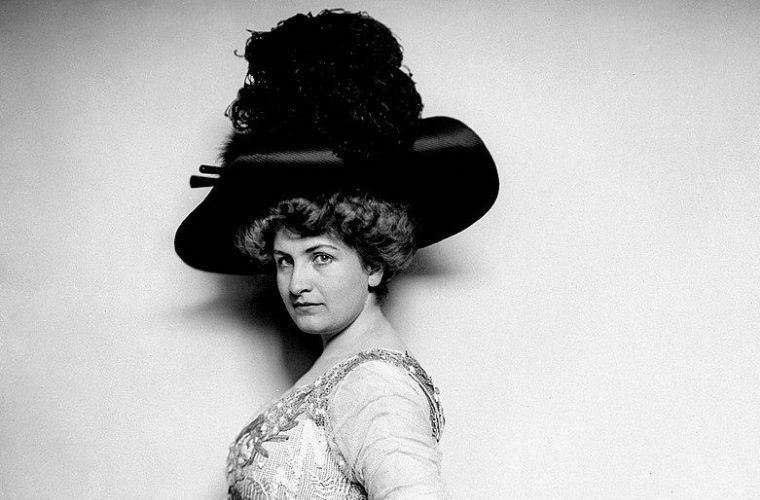The Nash Ensemble’s concerts dedicated to “Beethoven and the Romantics” not only trace the flowering of the Romantic spirit in music from the Vienna of the 1800s through a continent and across the century. They also give a place at the top table for works by once-sidelined helpmeets of the movement’s giants: Fanny Mendelssohn, Clara Schumann, Alma Mahler.
On Saturday night at the Wigmore Hall, Roderick Williams sang Lieder by both Mahlers as a fin-de-siècle intermission between two chamber pieces that showcased the cheerfully ebullient side of the Romantic revolution: Beethoven’s E flat Quintet for piano and winds, and Schubert’s imperishable Trout. With the Nash players in dashing form, the bubbling exuberance of both quintets wrapped effectively around the more harmonically ambiguous late-century songs. Williams’s fans in the house, however, might have been left wanting just a little more.
The Beethoven Op.16 quintet – a response to, and expansion of, Mozart’s K452 for the same forces, in the same key – nicely balanced rusticity with refinement. Oboe, clarinet, bassoon and horn found a bucolic twang and burr in their accents, offset by the bids towards a more airborne elegance coming from pianist Simon Crawford-Phillips. This is sophisticated Hausmusik at its most convivial; the Nashes located both its fun and its warmth. At moments – notably during Richard Watkins’s plangent horn solo in the adagio – you hear glimpses of what Beethoven would later achieve in this key, while the piano’s ambitious bursts of witty invention threaten to crash through the farmyard gate. But the winds (with Ursula Leveaux’s bassoon, Gareth Hulse’s oboe and Richard Hosford’s clarinet in high spirits both together and alone) always bring us back to earth.
 In songs by both Gustav and Alma Mahler (pictured right), Roderick Williams gave us just enough to seed the desire for an extra helping. These pieces occupy the lighter end of the Mahlerian family palette: two early vignettes by Gustav (“Frühlingsmorgen”; “Hanse und Grete"), three haunting, evocative sketches from Alma, and four of the five Rückert Lieder. The flickering, twilit chromaticism of her settings of verses by Rilke, Falke and Dehmel hint, briefly, at the gift Alma’s husband sought to stifle. As for Williams’s omission of the great, dark “Um Mitternacht” from the Rückert set, it was in keeping with the upbeat tone of the evening’s bill but left this listener feeling slightly short-changed. Still, his immaculate German diction, silkily rounded tone and pointed but never melodramatic use of hand gestures to express meaning bore witness to the usual integrity of his musicianship. With Crawford-Phillips as an ever-sensitive partner, his multi-hued baritone became the vehicle for a style of vocal storytelling that leads listeners thorough a wide arc of feeling rather than simply striking poses. If he executed some striking, near-operatic crescendos and drastic dynamic shifts, Williams could also whisper, confide and (in “Hanse und Grete") even yodel.
In songs by both Gustav and Alma Mahler (pictured right), Roderick Williams gave us just enough to seed the desire for an extra helping. These pieces occupy the lighter end of the Mahlerian family palette: two early vignettes by Gustav (“Frühlingsmorgen”; “Hanse und Grete"), three haunting, evocative sketches from Alma, and four of the five Rückert Lieder. The flickering, twilit chromaticism of her settings of verses by Rilke, Falke and Dehmel hint, briefly, at the gift Alma’s husband sought to stifle. As for Williams’s omission of the great, dark “Um Mitternacht” from the Rückert set, it was in keeping with the upbeat tone of the evening’s bill but left this listener feeling slightly short-changed. Still, his immaculate German diction, silkily rounded tone and pointed but never melodramatic use of hand gestures to express meaning bore witness to the usual integrity of his musicianship. With Crawford-Phillips as an ever-sensitive partner, his multi-hued baritone became the vehicle for a style of vocal storytelling that leads listeners thorough a wide arc of feeling rather than simply striking poses. If he executed some striking, near-operatic crescendos and drastic dynamic shifts, Williams could also whisper, confide and (in “Hanse und Grete") even yodel.
In the Rückert songs, the mellow, grounded tones of “Liebst du um Schönheit” yielded to the airy, introspective calm of “Ich bin der Welt abhanden gekommen”, its high notes floating quietly and serenely into a soothing void. As always, Williams delivered true character as well as relaxed mastery. It turns out that he even managed to sing through a cold (not that anyone would guess).
The closing Trout made a clever match for the Beethoven quintet, with bucolic, outdoor and folk-like elements now transfigured by Schubert into a brilliantly effervescent work of art. This fish can lose its lustre through excess exposure, but the Nash string players – with Crawford-Phillips as their driving, dancing motor – found a swagger and sparkle that lent the whole work a sun-dappled glint. With Stephanie Gonley’s violin, muscular but nimble, in the lead, the allegro had a properly vivace snap and zing, balanced by the liquid warmth of Adrian Brendel’s cello. Schubert’s unusual chamber configuration allows no hiding place in this stream of melody, and Graham Mitchell’s bass seized its rare spell in the limelight: pulsing powerhouse, and solo star. In the melting andante, Timothy Ridout’s viola conversed sweetly with Brendel’s cello.
However, in the extrovert attack of the opening movements it could sound as if propulsive energy were putting lilting grace and fine detail in the shade. The kaleidoscopic variations on “Die Forelle” amply restored the balance, as Crawford-Phillips’s piano charmed and dazzled over darting, bustling strings that never lost their individual timbre. This was collegiate ensemble playing at a level to delight and uplift, and the storming giusto finale – with its wrong-key, applause-baiting trick ending beautifully carried off – capped the overriding mood of bouncing geniality. Further Nash adventures in the long Romantic century will take them into more troubled musical waters; here, at least, a sense of joy flowed smooth and clear.














Add comment